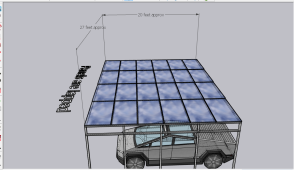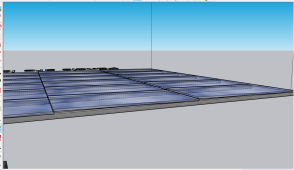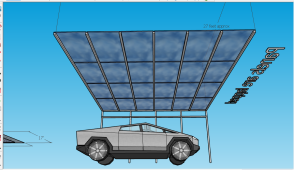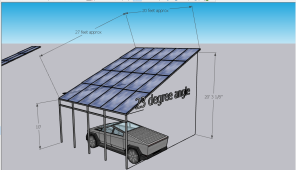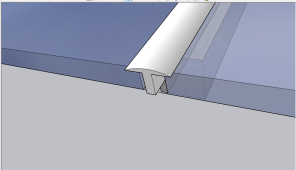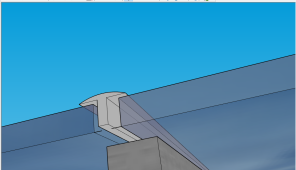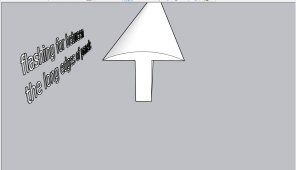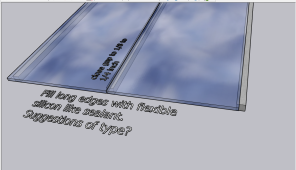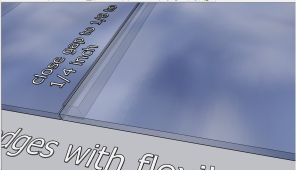galstaf
New Member
- Joined
- May 31, 2020
- Messages
- 140
Hey all,
So I am kicking around some concepts to use PV panels as actual roofing on a carport/lean to cover. I am looking at using low cost used panels and then "lapping" them (without covering the cells obviously) so that the upper panel sheds water onto the panel below and the water doesn't drip thru into the space below.
From what I have seen you can get used panels now for not much more that it would cost to buy a similar sized sheet of plywood! (I am only partially kidding). 
The panels will be held up by 2.5"x2.5" galvanized steel square tube often used on carports and barns. I have a steel sided barn rated to 130mph winds that uses these as roof and wall structure 60 inches on center spacing.
I have the tubing spaced 42 inches apart in my concept carport, so I feel that should be plenty strong.
I will add some concept pics to help you visualize (obviously not completely showing all bracing etc).
Questions:
Has anyone done this or something similar? If so, any comments on how it worked out or what you would do to improve?
Any recommendation on the slope of the roof for an installation in Georgia/South Carolina?
Any recommendation on wiring these up... look at one big inverter, micro inverters etc?
Any recommendations on how to attach to the galvanized steel tubing?
How much spacing should there be between the long edges for expansion/contraction?
Any recommendations on flashing in between the long edges of the panels to help keep water from shedding thru.




